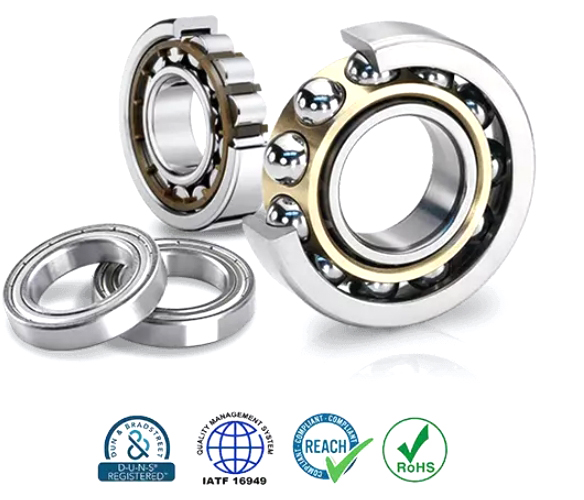Need Support?
Please provide your question. We’ll find you with the best support options.
⬇️ Scroll Down Now or Contact ISK for More Bearing Information
Table of Content
Generally, "bearings" facilitate movement between two parts and reduce friction. A typical bearing has two surfaces that roll against each other, allowing the two mating parts to move without friction.
If you want to know the difference between bushing and bearing, You should first understand what the bearings are.
According to the rotational motion and the linear motion, they are mainly divided into Ball Bearings, Needle Roller Bearings, Rod End Bearings, Thrust Bearings, Bushing Bearings, and Self-aligning roller bearings, etc.
The shape and clearance or interference fit with mating components of each bearing are designed to suit its specific application.
Bearing shapes can vary widely, and features such as flanges, balls, and holes can be customized to improve the overall performance of the application.
Bearings can transmit loads radially or axially (thrust) and in many cases both radial and axial loads.
This material has the necessary hardness and purity – both important factors for high load ratings and long lifespan.
 Learn More:What is a Bushing?
Learn More:What is a Bushing?
Bushing bearings are often very inexpensive, compact, lightweight, and have a high load-carrying capacity.
Bushing bearings are usually made of anti-corrosion materials such as PTFE or graphite or POM, etc.
They are usually cast on the inner surface of the bearing pad.
Unlike the rolling action of the ball or roller bearings, bushing bearings can run with relubrication or dry running without additional lubrication to ensure smooth and continuous operation.
Therefore, some bushing bearings on the surface of the covering layer have many pockets to retain lubricating grease. Because sometimes extra lubricant is beneficial in terms of wear and friction so additional grooves in some bushing surfaces can serve as reservoirs for lubricant.
Simply, bushing bearing facilitates movement between two components, absorbs friction, and reduces vibration so they not only feature excellent wear resistance, but also their contact areas are highly resistant to shock loads, making them suitable for a variety of heavy-duty applications.
Comparing bushing bearings with the ball bearing and roller bearings, bushing bearingshave a sliding effect and are generally self-lubricating to ensure smooth and continuous operation.
In a bushing or plain bearing, the shaft and bearing move in opposite directions on the sliding surfaces. In contrast, the two parts of a rolling bearing that are close to each other - the inner ring and the outer ring - are separated by rolling elements. This design produces much less friction than bushing bearings.
In conclusion, the bushing is bearing but bearing may not necessarily be a bushing type.
Bushing bearings are the most common type of flat bearing and are used in a variety of applications.
Bushing bearings are designed to carry linear, oscillating, or rotary shafts and function by sliding action.
Plain and bushing bearings are generally compact, lightweight, and generally good value.
bushing bearings typically contain PTFE and are self-lubricating to ensure smooth operation and extended bushing life. Bushing bearings do not require external lubricants such as grease or oil, ensuring they perform reliably under robust operating conditions and a range of operating temperatures.
However, sometimes extra lubricant is beneficial in terms of wear and friction so additional grooves in some bushing surfaces can serve as reservoirs for lubricant.
Thanks for reading "Difference between bushing and bearing".
Why is ISK BEARINGS frequently chosen as the specified bearing brand by major international companies?

Please provide your question. We’ll find you with the best support options.